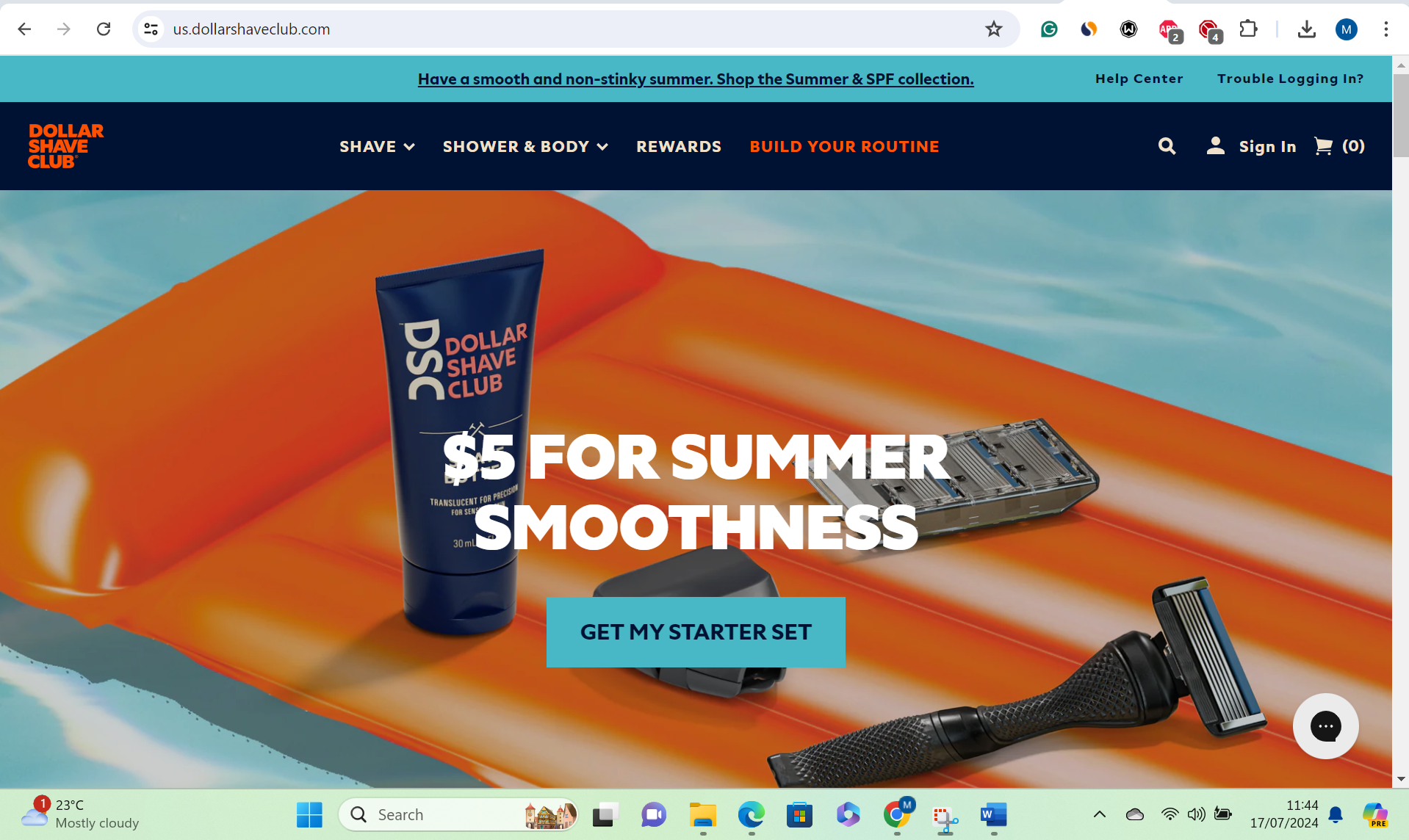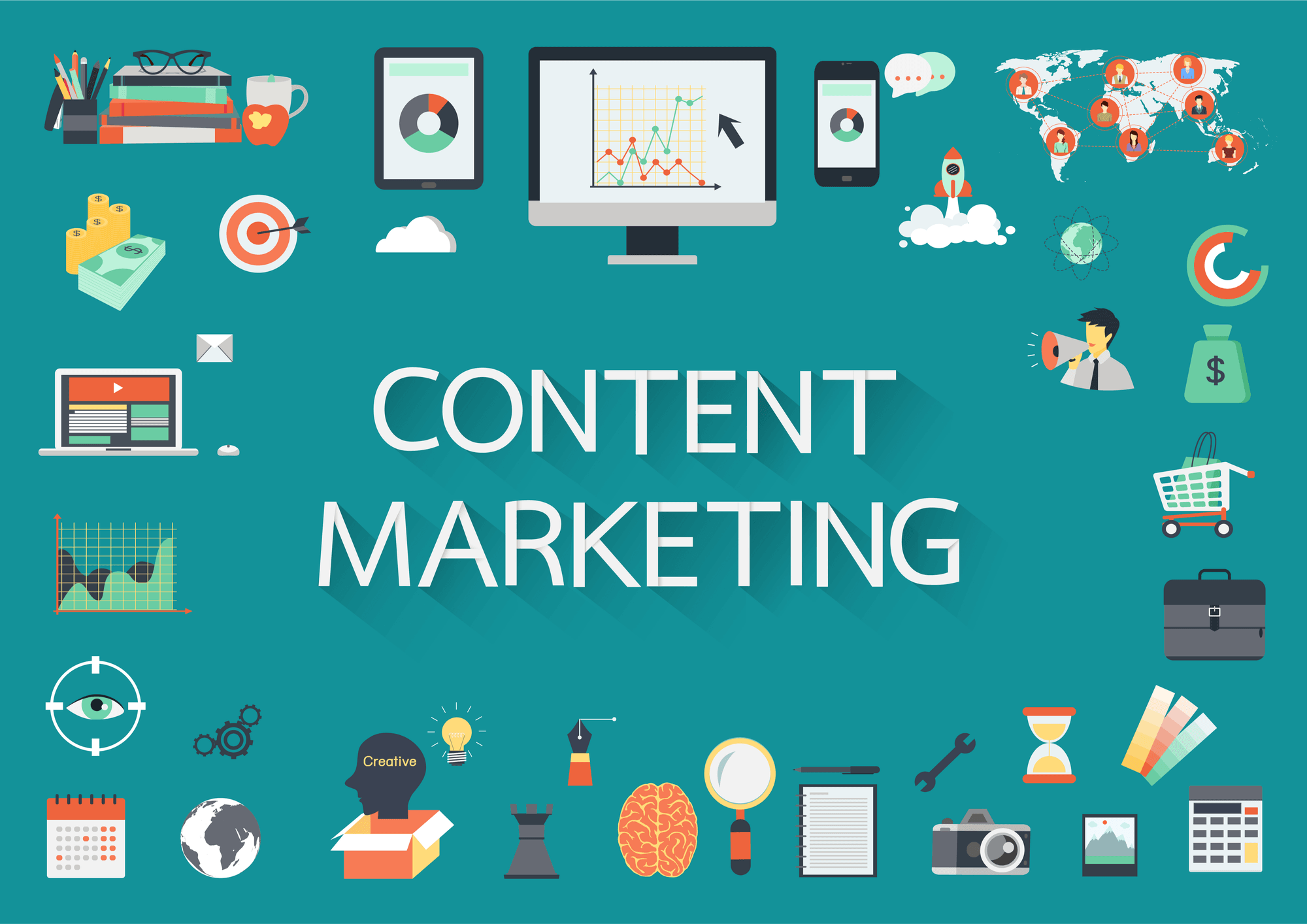Picture this: a small local bakery struggling to stay afloat in a sea of competitors. They decided to start a blog, sharing recipes, baking tips, and behind-the-scenes stories. Fast forward a few months, and their customer base has doubled, and their social media following has skyrocketed. That’s the magic of content marketing.
Content marketing isn’t just a buzzword; it’s a powerful tool that can transform how businesses connect with their audience. At its core, content marketing is about creating and sharing valuable content to attract and retain customers. It’s not about hard selling but about building trust and establishing your brand as a go-to resource in your industry.
In this article, we’ll dive into the nuts and bolts of content marketing, exploring strategies that genuinely work to acquire customers. Whether you’re a seasoned marketer or just starting, these insights will help you harness the full potential of content marketing to grow your business. Let’s get started!
Understanding Content Marketing
Definition
Let’s start with the basics. Content marketing is all about creating and distributing valuable, relevant, and consistent content to attract and engage a clearly defined audience.
The ultimate goal? Driving profitable customer actions. Think of it as storytelling with a purpose – where every blog post, video, or infographic is a piece of the larger narrative you’re weaving to connect with your customers.
Types of Content
Content marketing isn’t a one-size-fits-all approach. There are numerous types of content you can use to engage your audience:
- Blogs: These are fantastic for sharing in-depth knowledge and boosting your SEO.
- Videos: Perfect for capturing attention and engagingly explaining complex ideas.
- Infographics: Great for presenting data and statistics in a visually appealing format.
- Social Media Posts: Quick, digestible content that can drive engagement and foster community.
- E-books and Whitepapers: Excellent for providing detailed insights and generating leads.
- Podcasts: A wonderful medium for storytelling and establishing thought leadership.
Benefits
So, why should you care about content marketing? Here are some of the key benefits:
- Brand Awareness: Quality content gets your name out there, helping people become familiar with your brand.
- Trust-Building: By consistently providing value, you position your brand as a trusted authority in your industry.
- Customer Engagement: Engaging content keeps your audience coming back for more, fostering a deeper connection.
- Lead Generation: Valuable content can entice potential customers to share their contact information in exchange for a resource they find useful.
- SEO Boost: Search engines love fresh, relevant content. Regular updates can help improve your search engine rankings, making it easier for customers to find you.
Content marketing isn’t just about selling; it’s about building relationships. When done right, it creates a loyal customer base that values your brand for more than just your products or services.
Crafting a Content Marketing Strategy
Identify Your Audience
First things first – who are you talking to? Understanding your audience is the cornerstone of any successful content marketing strategy. Here are a few tips to help you nail down your target audience:
- Create Buyer Personas: Develop detailed profiles of your ideal customers. Include demographics, interests, pain points, and buying behaviors.
- Conduct Surveys and Interviews: Direct feedback from your current customers can provide valuable insights into what they want and need.
- Analyze Your Data: Use tools like Google Analytics and social media insights to gather data on who is engaging with your content and how.
Set Clear Goals
Setting goals gives your content marketing efforts direction and purpose. Without clear objectives, it’s easy to get lost in the sea of content creation. Aim to set SMART goals – Specific, Measurable, Achievable, Relevant, and Time-bound. Here’s why:
- Specific: Clear and well-defined goals ensure everyone on your team knows what you’re working towards.
- Measurable: Metrics allow you to track your progress and determine what’s working.
- Achievable: Set realistic goals that are within your capabilities.
- Relevant: Ensure your goals align with your overall business objectives.
- Time-bound: Set deadlines to keep your team on track and motivated.
For example, instead of saying, “We want more website traffic,” aim for, “We want to increase our website traffic by 20% over the next three months.”
Content Planning
Once you know who you’re targeting and what you want to achieve, it’s time to plan your content. Here’s how to create a solid content calendar:
- Brainstorm Topics: Think about what interests your audience and how you can address their pain points. Consider trending topics in your industry.
- Set a Publishing Schedule: Decide how often you’ll publish content. Consistency is key, so choose a schedule you can maintain.
- Mix Content Types: Keep things interesting by mixing different types of content (blogs, videos, social media posts, etc.).
- Plan Ahead: Use a content calendar tool like Trello or Google Calendar to map out your content schedule for the next few months. Include key dates and deadlines.
By planning your content, you can ensure a steady stream of valuable content that keeps your audience engaged and coming back for more. Plus, it helps you stay organized and avoid the last-minute scramble to produce content.
Creating High-Quality Content
Value-Driven Content
Let’s get one thing straight: your audience doesn’t want fluff. They crave content that offers real value, something they can learn from, use, or be inspired by. Here’s how to ensure your content hits the mark:
- Solve Problems: Identify your audience’s pain points and create content that offers solutions.
- Educate and Inform: Share your expertise and insights to help your audience understand your industry better.
- Entertain: Don’t be afraid to add a bit of humor or creativity to make your content enjoyable.
- Inspire: Share success stories or motivational pieces that resonate with your audience’s aspirations.
When your content genuinely helps your audience, they’re more likely to engage with it, share it, and remember your brand.
Storytelling
Humans are wired for stories. We connect with narratives on an emotional level, which makes storytelling a powerful tool in content marketing. Here’s how to weave storytelling into your content:
- Create Relatable Characters: Whether it’s your own brand’s journey or a customer’s success story, characters that your audience can relate to make your story more engaging.
- Build a Narrative Arc: Structure your content with a clear beginning, middle, and end. Introduce a challenge, describe the journey, and conclude with a resolution.
- Use Emotional Triggers: Tap into emotions like joy, fear, surprise, or curiosity to create a deeper connection with your audience.
- Be Authentic: Authenticity builds trust. Share real stories, even if they include struggles and setbacks.
By incorporating storytelling, you can turn ordinary content into memorable experiences that keep your audience hooked.
SEO Best Practices
Even the most brilliant content won’t make an impact if no one can find it. That’s where SEO (Search Engine Optimization) comes in. Here are some basic SEO tips to ensure your content is discoverable:
- Keyword Research: Use tools like Google Keyword Planner or Ahrefs to find keywords relevant to your content and audience.
- Optimize Titles and Headings: Include primary keywords in your titles and headings to signal what your content is about.
- Meta Descriptions: Write compelling meta descriptions that include keywords and entice readers to click.
- Internal and External Links: Link to other relevant content on your site (internal links) and authoritative external sources. This boosts your content’s credibility and SEO.
- Mobile-Friendly Design: Ensure your content is easily accessible on mobile devices. A responsive design improves user experience and SEO.
- High-Quality Backlinks: Encourage other reputable sites to link to your content. This signals to search engines that your content is trustworthy and valuable.
By focusing on these SEO best practices, you can increase the visibility of your content, attract more visitors, and ultimately drive more customer acquisition.
Distributing Content Effectively

Owned Media
Your owned media platforms are your most valuable assets when it comes to distributing content. These are channels you control entirely, allowing you to craft your message without external interference. Here’s how to make the most of them:
- Website: Your website is your digital home base. Ensure it’s user-friendly, regularly updated, and optimized for search engines. A well-maintained blog can drive organic traffic and establish your authority.
- Email List: Email marketing is incredibly powerful. Build and maintain an email list to share newsletters, exclusive content, and personalized offers. Segmented email campaigns can target specific audience groups with tailored messages.
- Blog: Regularly publishing blog posts keeps your audience engaged and coming back for more. Use your blog to share insights, updates, and valuable information relevant to your audience.
Earned Media
Earned media refers to the exposure you gain through word-of-mouth, social media shares, and other free publicity. It’s all about leveraging third-party platforms to spread your message. Here’s how to do it effectively:
- Social Media: Engage with your audience on platforms like Facebook, Twitter, LinkedIn, and Instagram. Share your content, join conversations, and encourage your followers to share your posts. Consistent, genuine interaction helps build a loyal community.
- Influencer Marketing: Partner with influencers who resonate with your brand and audience. Their endorsements can significantly amplify your reach and credibility. Choose influencers whose followers align with your target audience for maximum impact.
- Guest Blogging and Media Coverage: Write guest posts for reputable blogs or news outlets in your industry. This not only exposes your content to a wider audience but also boosts your authority and SEO through high-quality backlinks.
Paid Media
While organic reach is essential, paid media can give your content the extra push it needs to reach a broader audience. Here’s how to leverage paid advertising:
- Social Media Ads: Platforms like Facebook, Instagram, and LinkedIn offer powerful targeting options. You can reach specific demographics, interests, and behaviors to ensure your content gets in front of the right people.
- Pay-Per-Click (PPC) Ads: Google Ads and Bing Ads allow you to bid on keywords related to your content. When users search for those terms, your ads appear at the top of search results, driving traffic to your site.
- Sponsored Content: Collaborate with media outlets or influencers to create sponsored posts. These posts blend seamlessly with organic content, making them more likely to be trusted and engaged with by the audience.
By effectively utilizing owned, earned, and paid media, you can maximize the reach and impact of your content. A well-rounded distribution strategy ensures your content doesn’t just sit idle but actively drives customer acquisition and engagement.
Measuring Success

Key Metrics
To understand the impact of your content marketing efforts, you need to track key performance indicators (KPIs). Here are some crucial metrics to keep an eye on:
- Engagement: Monitor likes, shares, comments, and time spent on your content. High engagement indicates your content resonates with your audience.
- Traffic: Track the number of visitors to your website and blog. An increase in traffic shows your content is attracting interest.
- Conversions: Measure how many visitors take the desired action, such as signing up for a newsletter, downloading a resource, or making a purchase.
- Bounce Rate: This indicates the percentage of visitors who leave your site after viewing only one page. A high bounce rate may signal that your content isn’t meeting visitors’ expectations.
- Lead Generation: Track the number of leads generated from your content. This could include email sign-ups, contact form submissions, or demo requests.
- SEO Performance: Monitor your search engine rankings and organic traffic to gauge how well your content is performing in search results.
Tools and Techniques
To effectively measure your content marketing success, you’ll need the right tools and techniques. Here are some recommendations:
- Google Analytics: This is a must-have tool for tracking website traffic, user behavior, and conversion rates. It provides detailed insights into how visitors interact with your content.
- Social Media Insights: Platforms like Facebook, X (previously, Twitter), and LinkedIn offer built-in analytics to monitor engagement, reach, and audience demographics.
- SEO Tools: Tools like Ahrefs, SEMrush, and Moz help track keyword rankings, backlinks, and overall SEO performance.
- Email Marketing Platforms: Tools like Mailchimp or HubSpot provide metrics on open rates, click-through rates, and conversions for your email campaigns.
- Content Management Systems (CMS): Many CMS platforms, such as WordPress, offer plugins and built-in analytics to help you track content performance.
Iterate and Improve
Content marketing is an ongoing process. To stay ahead, you need to continually analyze your results and refine your strategies. Here’s how to do it:
- Regularly Review Your Metrics: Set aside time each month to review your KPIs and identify trends. Look for patterns in what’s working and what’s not.
- Conduct A/B Testing: Experiment with different headlines, formats, and CTAs (calls to action) to see what resonates best with your audience.
- Gather Feedback: Don’t hesitate to ask your audience for feedback. Surveys and comments can provide valuable insights into how your content is perceived.
- Adjust Your Strategy: Based on your findings, tweak your content marketing strategy. This might mean focusing more on certain content types, adjusting your posting schedule, or targeting different keywords.
By measuring your success and continuously refining your approach, you can ensure your content marketing efforts remain effective and aligned with your business goals. This iterative process helps you stay responsive to your audience’s needs and keeps your content strategy dynamic and impactful.
Case Studies
Successful Examples
- HubSpot

HubSpot, a leader in inbound marketing, has effectively used content marketing to grow its customer base. They offer a wealth of valuable content, including blog posts, eBooks, webinars, and courses. By providing educational resources, HubSpot has established itself as an authority in the marketing industry.
- Strategy: HubSpot’s blog covers a wide range of marketing topics, attracting a diverse audience. Their gated content, such as eBooks and courses, captures leads by offering high-value information in exchange for contact details.
- Results: HubSpot’s content strategy has helped them build a massive audience, generate leads, and convert them into loyal customers. Their blog receives millions of visits each month, and their lead generation efforts have contributed significantly to their growth.
- Dollar Shave Club

Dollar Shave Club disrupted the razor industry with a viral video that combined humor and value. The company’s content marketing strategy focuses on engaging videos, blog posts, and social media content that resonates with their target audience.
- Strategy: Their famous launch video introduced the brand’s unique value proposition in a memorable and entertaining way. They continued to produce content that aligned with their brand’s humorous and straightforward tone, building a strong community on social media.
- Results: The launch video went viral, garnering millions of views and propelling the brand into the spotlight. Dollar Shave Club’s content-driven approach helped them acquire millions of subscribers and eventually led to a $1 billion acquisition by Unilever.
- Airbnb

Airbnb uses content marketing to tell stories that inspire people to travel and explore unique accommodations around the world. They leverage user-generated content, social media, and a dedicated blog to showcase experiences and destinations.
- Strategy: Airbnb’s blog, “Airbnb Magazine,” features stories from hosts and guests, travel tips, and destination guides. They encourage users to share their experiences on social media, creating a wealth of authentic content that highlights the diversity of their listings.
- Results: Airbnb’s content marketing has helped build a global community of hosts and travelers. The authentic stories and user-generated content have driven engagement and trust, contributing to their rapid growth and strong brand presence.
Lessons Learned
- Provide Value: Successful content marketing focuses on delivering real value to the audience. Whether through educational resources like HubSpot, entertaining videos like Dollar Shave Club, or inspiring stories like Airbnb, valuable content attracts and retains customers.
- Leverage Multiple Formats: Different content formats cater to different audience preferences. Use a mix of blog posts, videos, infographics, and social media content to engage a broader audience.
- Tell Authentic Stories: Authenticity resonates with audiences. Share real stories, user experiences, and behind-the-scenes insights to build trust and connection.
- Encourage User Participation: User-generated content can amplify your reach and add authenticity to your brand. Encourage your audience to share their experiences and stories related to your product or service.
- Measure and Adapt: Continuously track your content’s performance and be willing to adapt your strategy based on the insights you gather. What works today might not work tomorrow, so stay agile and responsive to your audience’s needs.
By learning from these successful examples, you can refine your own content marketing strategy to better attract, engage, and retain customers.
Key Takeaways
We’ve journeyed through the world of content marketing, exploring how it can powerfully drive customer acquisition. We began by understanding the essence of content marketing and the variety of content types that can captivate your audience.
Crafting a content marketing strategy involves identifying your audience, setting clear goals, and planning your content. Creating high-quality, value-driven content is key, along with storytelling and adhering to SEO best practices to ensure your content is discoverable.
Effective distribution through owned, earned, and paid media amplifies your reach, while measuring success with key metrics and tools helps refine your strategy. Finally, we looked at case studies from companies like HubSpot, Dollar Shave Club, and Airbnb, drawing valuable lessons from their success stories.
Now it’s your turn to put these strategies into action. Start by understanding your audience and crafting a content plan that delivers real value. Experiment with different content formats, tell authentic stories and don’t forget to measure your success along the way.







